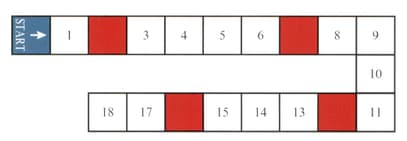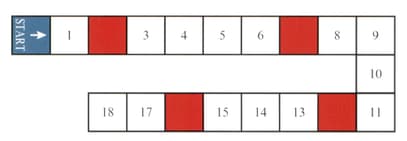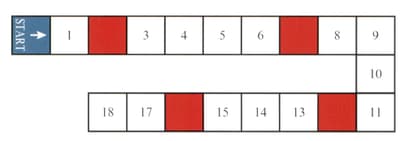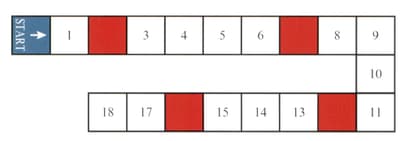A biased die in the shape of a pyramid has five faces marked and . The possible scores are and and , where is a constant.
The die is rolled three times and the scores are added together. Evaluate and find the probability that the sum of the three scores is less than .

Important Questions on Probability
A game board is shown in the diagram.
Players take turns to roll an ordinary fair die, then move their counters forward from 'start' a number of squares equal to the number rolled with the die. If a player's counter ends its move on a coloured square, then it is moved back to the start.

Find the probability that a player's counter is on 'start' after rolling the die once.
A game board is shown in the diagram.
Players take turns to roll an ordinary fair die, then move their counters forward from 'start' a number of squares equal to the number rolled with the die. If a player's counter ends its move on a coloured square, then it is moved back to the start.

Find the probability that a player's counter is on 'start' after rolling the die twice.
A game board is shown in the diagram.
Players take turns to roll an ordinary fair die, then move their counters forward from 'start' a number of squares equal to the number rolled with the die. If a player's counter ends its move on a coloured square, then it is moved back to the start.

Find the probability that after rolling the die three times, a player's counter is on .
A game board is shown in the diagram.
Players take turns to roll an ordinary fair die, then move their counters forward from 'start' a number of squares equal to the number rolled with the die. If a player's counter ends its move on a coloured square, then it is moved back to the start.

Find the probability that after rolling the die three times, a player's counter is on .
Independent events and are such that and . Find:
Independent events and are such that and . Find:
